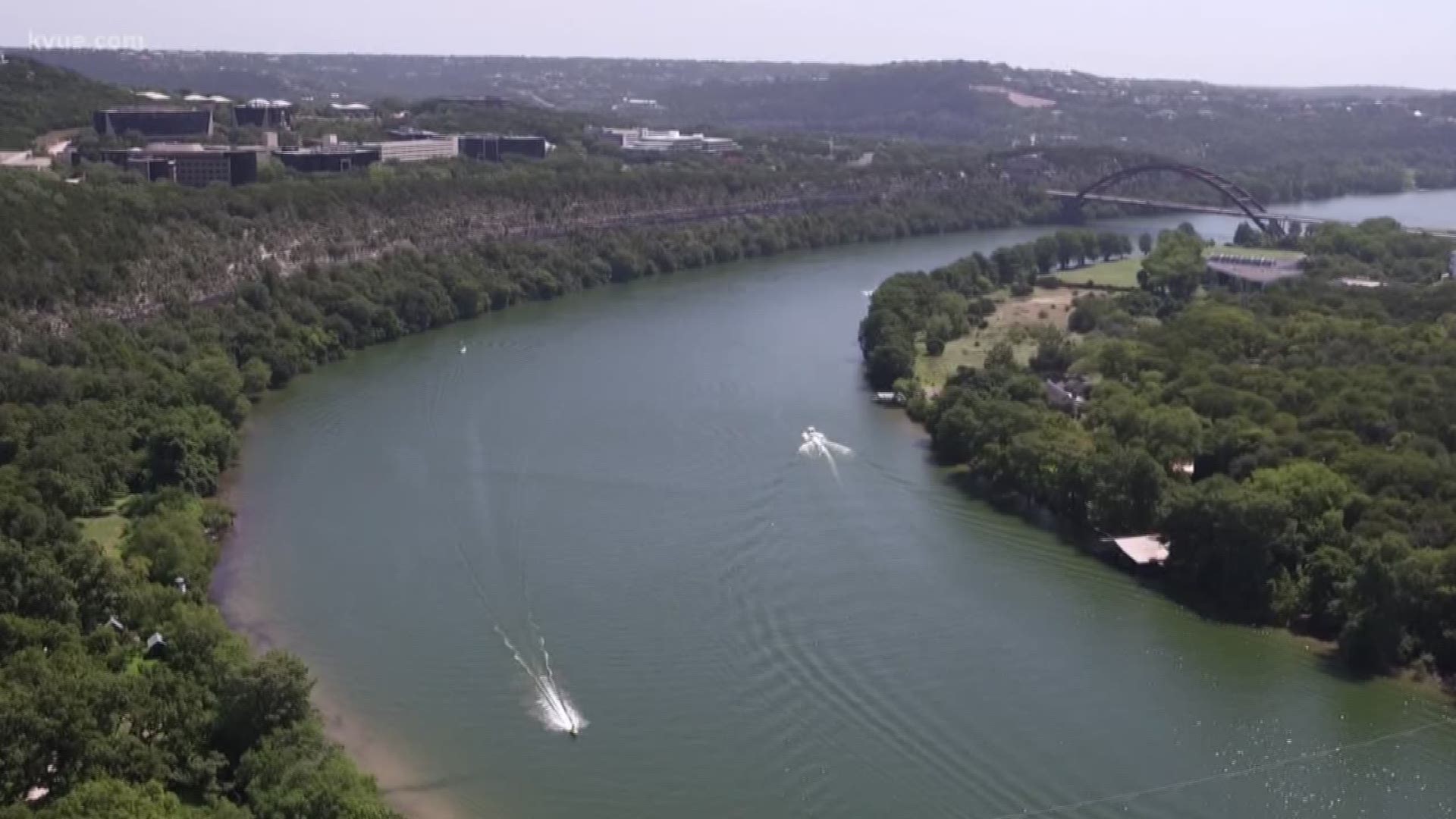AUSTIN, Texas — In nature, time moves slowly.
You only need to take look underneath Lake Austin to see that's true.
This is the first promising signs of growing, thriving plant life in nearly three years.
“All told now, I think we have a little over an acre of vegetation doesn't sound like much,” said Dr. Brent Bellinger, Ph.D., lead reservoir ecologist for the City of Austin.
It’s a big deal for a lake that looks mostly barren.
Between 2003 and 2014, with permission from the state, the city dumped 48,369 grass carp into the lake, hoping they would eat an invasive plant called hydrilla.
The weed had been growing out of control -- getting stuck in boat propellors and catching swimmers.
Stocking the lake with grass carp worked, but too well. The carp didn't just eat the hydrilla. It ate all the plants in the lake.
Few big fish
One of the best fishing lakes in the country is now not even on most fisherman's radars.
“More likely than not, if I'm going fishing, I'm going to go to any lake other than Austin,” said John Ward, bass fisherman and organizer of Texas Tournament Zone’s tournaments.
John Ward organizes fishing tournaments in Central Texas and caught a record setting bass on Lake Austin in 2013.
“Fishing is still really poor on this lake. So we don't really run tournaments here anymore,” said Ward. “This morning, I've been fishing a few hours and I've caught one fish. If I'd have been on Travis this morning I'd have caught 20 fish by now.”
The lack of plant life has taken its toll on the fish population and water quality. Robbing the water of nutrients and algae is making it difficult for fish to eat and hide. It is why the growing plant life along the banks of Lake Austin is such a welcome site.
“You're encouraged, but it's also when I see how well the reeds grow on this bank it reminds me of what this bank used to look like,” said Ward.
“This is one of the sites we came to last year,” said Dr. Brent Bellinger, taking KVUE out to the lake and showing us one of the pens he installed.
Bellinger has been working to get plants growing again in the lake, protecting them from the carp by fencing them off.
“Once that balance between herbivore and plant hits the right balance, the native plant will quickly spread outside of these things,” said Bellinger.
Balance tipping back
There are signs the balance is tipping. At one point, it was estimated there were 30 grass carp per acre foot of water.
“We estimate there should be less than five grass carp per surface acre of Austin. Of course, there's one right there at the cage,” said Bellinger.
Lake time moves slowly.
“I think most anglers now have a different set of expectations,” said Ward.
Studies show most grass carp can live 10 years.
“We don't even know how long they're going to live. The studies they're using for their life expectancy are based on a river system on the other side of the country. So who knows how long they'll live in this climate in this water temperature,” said Ward.
These are questions and lessons that only time will answer.

